Apple Watch Series 11
Apple's latest Apple Watch with 5G, longer battery life, and more.
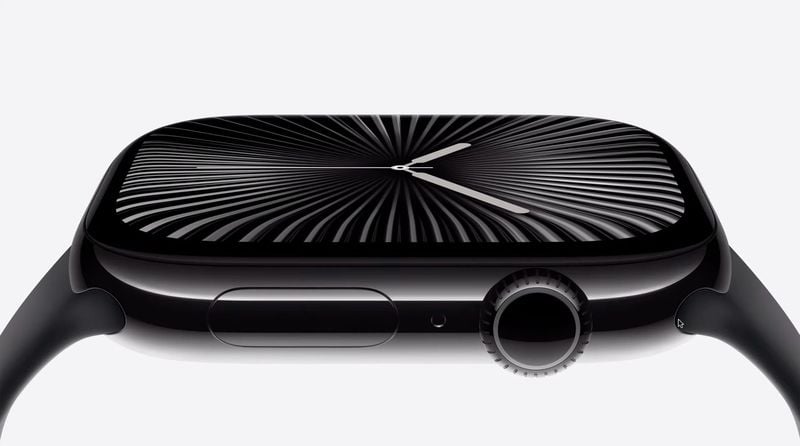
Should You Buy the Apple Watch Series 11
The Apple Watch Series 11 is Apple's newest flagship Apple Watch, released in September 2025. We're not expecting a new model until September 2026, so now is a good time to buy the Apple Watch Series 11.
Compared to the Series 10, the Series 11 has slightly longer battery life, more scratch resistant glass for the aluminum model, and a 5G cellular option. There are no other changes, so if you already have a Series 9 or Series 10, it's probably not worth the upgrade.
If you have an older Apple Watch model, it's a solid upgrade with the larger screen size introduced with the Series 10 and the longer battery life this year. The Series 11 has all of the health features Apple has introduced in the Apple Watch to date, including heart rate tracking, ECG, blood oxygen monitoring, hypertension alerts, sleep apnea alerts, sleep tracking, and more.
For those who want a more rugged model with a larger display, Apple sells the $799 Apple Watch Ultra 3, which has satellite connectivity this year. The Apple Watch SE 3 is also available for those who want a more affordable option. The SE 3 has many of the same features as the Series 11, but it lacks blood oxygen monitoring and ECG.
Apple Watch Series 11
Contents
The Apple Watch Series 11, introduced in September 2025, is the newest iteration of the Apple Watch that initially launched in April 2015. The Series 11 replaces the prior-generation Series 10 from 2024.
With last year's Apple Watch Series 10, Apple updated the Apple Watch with a thinner, lighter design. There have been no additional design changes in the Series 11, so it looks identical to the Series 10 with a square-shaped casing that has rounded edges, a slim-bordered display, sapphire crystal backing and Digital Crown with haptic feedback.
The back of the Apple Watch is made from metal, with a sapphire crystal that protects the included sensors. The metal integrates the Apple Watch antenna into the housing, saving component space, and the matching metal for the front and back is meant to make the Apple Watch look like it's made from a single piece of metal.
The Apple Watch Series 11 is available in 42mm and 46mm size options, and it comes in either aluminum or titanium. The aluminum Apple Watch Series 11 is available in Rose Gold, Silver, Space Gray, and Jet Black. Like last year's Series 10, the Jet Black shade has a glossy, reflective shine rather than a brushed aluminum finish like the other colors. The titanium Series 11 is available in Slate, Gold, and Natural with a shiny, reflective finish.
Display quality is the same, and the Series 11 features an LTPO3 wide-angle OLED display with a maximum brightness of 2,000 nits. Always-On display technology lets users see their watch face and complications at all times, and there's still a ticking seconds hand that's visible without raising the wrist.
The aluminum Series 11 uses Ion-X glass that's 2× more scratch-resistant than the Series 10 glass. The titanium version features a more durable sapphire crystal display. The Series 11 features IP6X dust resistance, and a WR50 water resistance rating so it is swimproof. There is a water temperature sensor that displays the water temperature when you're swimming or in the ocean, and a depth gauge that works up to 6 meters deep for activities like snorkeling and shallow diving. A Tides app also provides seven rolling days of forecasted tidal information for coastlines and surf spots worldwide.
Like the Series 10, the Series 11 has an S10 chip with a 4-core Neural Engine for processing machine learning tasks. Apple did not introduce any chip upgrades this year, and the S10 didn't offer improvements over the S9. There is still 64GB of storage.
The Apple Watch Series 11 supports new health features that include Sleep Score and Hypertension Notifications. The Sleep Score feature provides a numerical interpretation of your sleep quality, taking into account bed time, time asleep, and the number of times you woke up in the night. Apple uses existing heart rate data to look for signs of hypertension or high blood pressure for the Hypertension Notifications. Neither feature is exclusive to the Series 11, and can also be used on the Series 9, Series 10, Ultra 2, and Ultra 3.
Heart rate monitoring, blood oxygen detection, ECG readings, sleep tracking, fall detection, loud noise monitoring, blood oxygen detection, built-in temperature sensing, and sleep apnea detection continue to be available. All of the above features are ones that Apple introduced with prior-generation models.
A Crash Detection feature takes advantage of the watch's gyroscope and accelerometer along with an advanced sensor-fusion algorithm to detect severe car crashes and alert emergency services. When a crash occurs, the Apple Watch checks in with the user and if no response is received within a 10-second countdown, emergency responders are contacted. The Apple Watch Series 11 also supports Fall Detection.
Battery life has improved and the Series 11 now lasts for up to 24 hours, six hours longer than the Series 10. Battery life can be extended to 38 hours with Low Power Mode. Low Power Mode disables the Always-On display, turns off background heart rate measurements, limits Wi-Fi and cellular connections, and more.
The Series 11 can fast charge from 0 to 80 percent in approximately 30 minutes when using an appropriate fast charger. A 15-minute charge provides up to eight hours of normal use, and a 5-minute charge provides up to eight hours of sleep tracking.
Apple is using the same second-generation Ultra Wideband chip in the Series 11 as in the Series 10. The UWB chip enables Precision Finding for locating a misplaced iPhone with visual, haptic, and audio guidance. The speaker has been updated to allow for media to play out loud, with no Bluetooth headphones required, and there is a new voice isolation neural network that suppresses background noise during phone calls.
Both GPS and GPS + Cellular models are available, and the cellular Apple Watches work with a separate cellular plan. Apple added support for 5G connectivity in many countries this year, an upgrade over LTE.
Apple Pay purchases are available with credit and debit cards stored in the Wallet app, and can be activated at a tap to pay location by double-pressing on the side button.
The Series 11 is being sold alongside the larger, more expensive, and more rugged Apple Watch Ultra 3, plus the lower-cost Apple Watch SE 3.
Note: See an error in this roundup or want to offer feedback? Send us an email here.
How to Buy
The Apple Watch Series 11 can be ordered from Apple and other retailers. Pre-orders began immediately following Apple's "Awe Dropping" event on September 9, with a launch following on Friday, September 19.
Reviews
Reviewers didn't have a lot to say about the Apple Watch Series 11, because there are few changes compared to the Series 10. The main differences are 5G connectivity and a longer battery life.
In testing, some reviewers did notice improved battery life. CNET was able to get between 27 and 32 hours per charge, and TechRadar got 17 hours from half a charge.
The 5G modem in the Series 11 supports faster speeds while improving power efficiency, but reviewers didn't see much in the way of speed improvements.
There was so little to say about the Series 11 that most reviewers combined the review with the Apple Watch Ultra 3 and the Apple Watch SE. Needless to say, the Series 11 is not worth the upgrade if you already have a Series 10, and if you have an older model, you might want to consider the more affordable Apple Watch SE 3 instead of the Series 11.
Design
Apple overhauled the design of the Apple Watch last year, making the device larger, thinner, and lighter. The Apple Watch Series 11 has the same design as the Series 10, with no updates. It features the same rounded, square look that Apple has used for years.

The Apple Watch Series 11 is available in 42mm and 46mm size options, in either aluminum or titanium. Apple used to offer a stainless steel version of the Apple Watch, but replaced it with lighter weight and more durable titanium last year.
Series 11 models weigh between 29.7 grams and 43.1 grams depending on size and material, with the titanium models coming in at about six grams heavier than aluminum models. There have been some slight weight changes in the Series 11 compared to the Series 10, likely due to updated batteries. The Series 11 models are just a bit heavier.
The 42mm Apple Watch Series 11 measures in at 42mm tall, 36mm wide, and 9.7mm deep, while the 46mm model measures in at 46mm tall, 39mm wide, and 9.7mm deep. Apple says the 42mm model fits 130mm to 200mm wrists, while the 46mm model fits 140mm to 245mm wrists.
The back of the Series 11 is made from an aluminum that matches the casing color, which means the device looks like it is crafted from a single piece of metal. A crystal back houses the electrical heart sensor and optical heart sensors, plus there is a speaker/air vent at the back. The sensors enable health-monitoring features like heart rate detection, ECGs, and more.

There is a Digital Crown on the side of the Apple Watch for scrolling, navigation, and Smart Stack access, and there is a side button for bringing up frequently used apps, accessing emergency services, confirming Apple Pay purchases, and more.

The Digital Crown is equipped with haptic feedback that offers a precise, mechanical feel when scrolling through lists and controlling various aspects of the Apple Watch, and it is key for the ECG app because it has a built-in electrode that works in tandem with the rear sensors.
Colors and Materials
The Apple Watch Series 11 comes in aluminum and titanium, a new material being offered instead of stainless steel. The aluminum Apple Watch models are the most affordable, while the titanium models are pricier.

Aluminum colors include Jet Black, Rose Gold, Space Gray and Silver. The Jet Black color has been polished so it is shiny, while the other colors are matte. Titanium colors include Slate, Gold, and Natural, all three of which have a mirror-like shine.
The titanium version of the Apple Watch Series 11 is 3D printed with aerospace-grade titanium powder. Apple's specialized printers create the case layer by layer, using less material than traditional forging.
The aluminum Apple Watch models are made from 100 percent recycled 7000 series aluminum, and are lightweight, inexpensive, and designed for an active lifestyle. The titanium models are heavier, more expensive, and designed for everyday wear.
Durability and Water Resistance
The aluminum Apple Watch Series 11 models use upgraded Ion-X glass for the display that's 2× more scratch resistant than the Series 10 aluminum models. The titanium models use sapphire crystal rather than glass. Sapphire crystal offers better scratch resistance than Ion-X glass because it is a harder material, which means the sapphire crystal models are more resistant to scratching and everyday wear and tear.

All Apple Watch Series 11 models feature IP6X dust resistance for use in environments like the beach or the desert, and they offer WR50 water resistance, rated for immersion in water as deep as 50 meters thanks to seals and adhesives. The speaker, which needs air to produce sound, is the only point of ingress and has been designed to expel water using sound vibrations after exposure to moisture.
Because it is rated for 50m immersion, the Apple Watch can be used when swimming in the ocean or in a pool. It can also be used for snorkeling and shallow diving up to 20 feet deep. Apple recommends against wearing the Apple Watch Series 11 when scuba diving, waterskiing, showering, or other activities that involve high-velocity water or deep submersion. For these water activities, the Apple Watch Ultra is recommended.
Apple's Apple Watch warranty does not cover water damage, so it is best to exercise caution when exposing the device to water.
Water Temperature Sensor and Depth Gauge
The Apple Watch Series 11 has a depth gauge and a water temperature sensor, which Apple says can be used for activities like swimming, shallow diving, and snorkeling.
The Depth gauge is able to measure up to six meters below the water's surface.
There's also a dedicated Tides app that provides information on high and low tides, rising and falling tides, tide height and direction, and sunrise and sunset.

Speaker
There is a single speaker in the Series 11, and it supports audio playback without connected headphones, so it can play music out loud.
Display
The Apple Watch Series 11 models have the same displays as the Series 10 models. The 42mm Apple Watch has a 374×446 resolution with 989 sq mm of display area, while the 46mm model has a 416×496 resolution with a 1,220 sq mm display area.

The LTPO3 OLED displays provide a wide viewing angle that ensures brightness remains consistent even when the Apple Watch is viewed from the side. Maximum brightness is still 2,000 nits, and minimum brightness is 1 nit. 1-nit minimum brightness allows for a second hand that updates even when the wrist is down.
With the always-on edge-to-edge display, the watch face, time, and complications are continually visible. The display dims when the wrist is down in order to preserve battery life, but key features like watch hands remain illuminated all the time.

Touching the watch face or raising the wrist brings the display back to full brightness, and to minimize battery drain, Apple has optimized watch faces for the feature. The Apple Watch's display also has a variable refresh rate that drops from 60Hz to as low as 1Hz when the watch is inactive.
S10 Chip
The Apple Watch Series 11 uses the same S10 System-in-Package (SiP) with a 64-bit dual-core processor that Apple used in the Series 10. The S10 was essentially the same chip as the S9, so there has been little in the way of processor improvements in the last few years.
The S10 chip has 5.6 billion transistors and a four-core Neural Engine for machine learning tasks.
Gestures
The S10 chip powers Double Tap, a gesture that you can use to control the Apple Watch. When you double tap your index finger and thumb, the sensors in the Apple Watch detect the motion and can activate what's on the display, allowing you to do things like answer a call, end a call, open a notification, play or pause music, start or stop a timer, check your Smart Stack, and more. Double Tap also works in third-party apps.
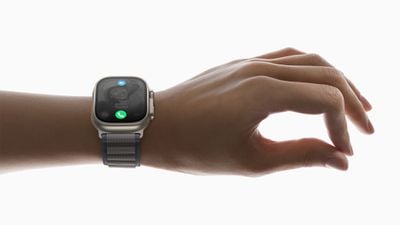
The S10 chip also powers Wrist Flick, a gesture that Apple introduced in watchOS 26. Wrist Flick lets you dismiss incoming notifications, calls, and more with a flick of the wrist.
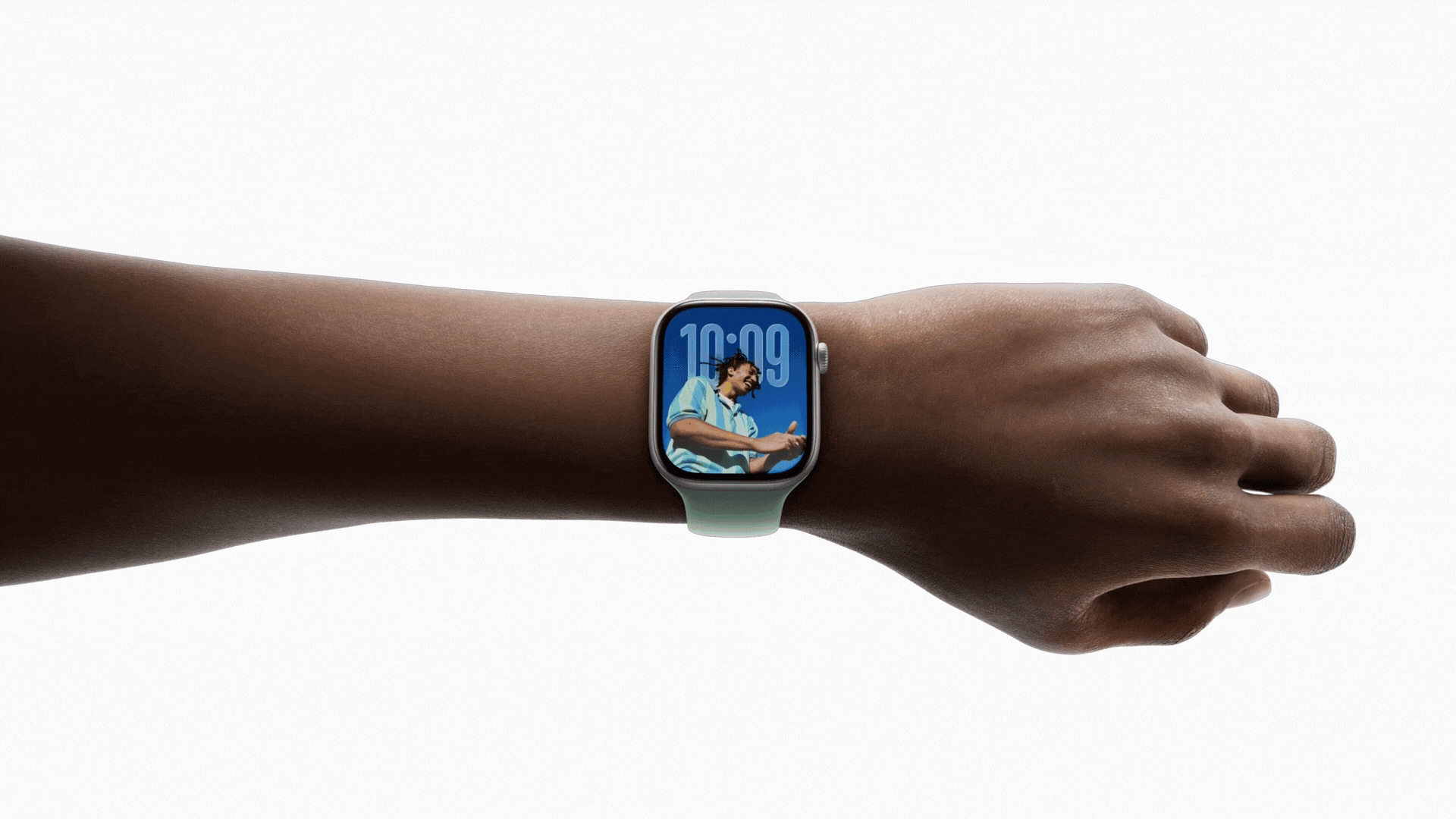
Storage
The Apple Watch Series 11 has 64GB of storage, the same as the Series 10.
Health Features
Like the Series 10, the Apple Watch Series 11 includes a third-generation optical heart rate sensor that calculates metrics like calorie burn, resting heart rate, and a heart rate that's too high, and the electrical heart rate sensor can be used for taking electrocardiograms, while LEDs and infrared light enable blood oxygen monitoring. A built-in accelerometer and gyroscope enable other important health-related features such as fall detection.
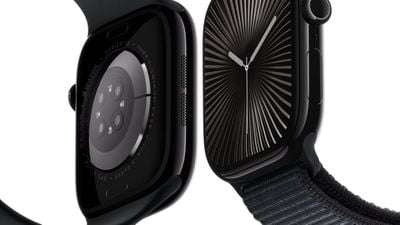
The Apple Watch can detect a low heart rate, a high heart rate, and an abnormal heart rate, monitoring for health problems like atrial fibrillation and sending notifications when anomalies are detected.
Hypertension Alerts
The Apple Watch Series 11's heart rate sensor also powers a new feature for detecting high blood pressure. The Apple Watch isn't able to measure specific systolic and diastolic pressures, but it looks for signs of hypertension in heart rate data.

After collecting 30 days of heart rate information, the Apple Watch can determine whether patterns related to possible hypertension have been detected. It analyzes how a user's blood vessels respond to beats of the heart over 30 days. Data is refreshed every 30 days, and users who receive an alert can then provide 7-days of blood pressure testing if a blood pressure cuff is available to get more information before contacting a doctor.
Hypertension alerts are not exclusive to the Series 11 and are also available on the Series 9, Series 10, Ultra 2, and Ultra 3 models.
ECGs
Electrodes in the back of the Apple Watch and the Digital Crown work together to allow users to take single-lead electrocardiograms. An ECG measures the electrical activity of the heart and can be used to diagnose health conditions by a doctor.
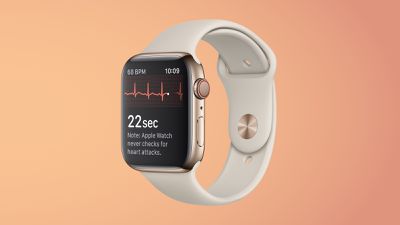
ECGs are captured by holding a finger on the Digital Crown of the Apple Watch and can detect a sinus rhythm (normal), an abnormal result, or, sometimes, an inconclusive result that should be shared with a doctor. The ECG is able to detect atrial fibrillation at heart rates between 50 and either 120 or 150 beats per minute, depending on country or region.
A single-lead ECG like the Apple Watch means there are two points of contact measuring the electrical sensations of your heart. Clinical electrocardiograms done by your doctor can have six to 12 leads for greater accuracy, but the Apple Watch offers the convenience of being able to take an ECG anytime anywhere in approximately 30 seconds.
Sleep Tracking
The Apple Watch Series 11 models can be worn at night to keep track of your sleep. It monitors when you're awake and when you're asleep, letting you know how much time you spent in the REM, Core, and Deep sleep stages. Sleep tracking also lets you know how often you've woken up in the night and for how long.
![]()
Sleep Score
There's a new Sleep Score metric that's available in watchOS 26, providing a numerical value for sleep quality. Sleep Score takes into account sleep duration, bedtime consistency, and how often the wearer wakes in the night, and how long is spent in each sleep stage.

Sleep Score shows the breakdown in each category so users can understand their sleep quality and learn steps to make it more restorative. Sleep Score is available on the Apple Watch Series 9 and later.
Sleep Apnea Detection
Using the accelerometer, the Apple Watch Series 11 can determine whether the wearer might suffer from sleep apnea. Sleep apnea causes breathing to stop repeatedly, resulting in disrupted sleep.
The Apple Watch is able to sense small movements at the wrist that are associated with interruptions in normal respiratory patterns, and the data can provide insight into the restfulness of sleep.
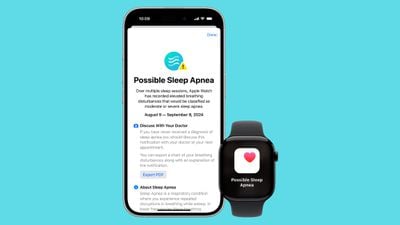
The Series 11 is able to analyze 30 days of sleep, letting you know if signs of sleep apnea are detected. Sleep apnea data can be viewed in the Health app on iPhone.
Crash Detection
Motion sensors and an advanced sensor-fusion algorithm allow the Apple Watch Series 11 to detect a severe car crash and alert emergency services. After a crash is detected, the Apple Watch checks in with the user and then dials emergency services after a 10-second period with no response.
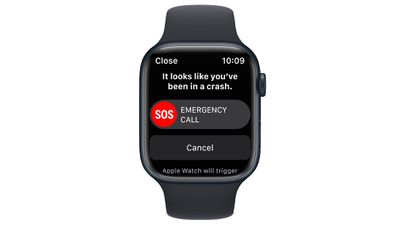
Temperature Measurements
There are two temperature sensors in the Series 11, including one that measures the temperature at the wrist and one that measures the ambient temperature in the air to cut down on outside bias.
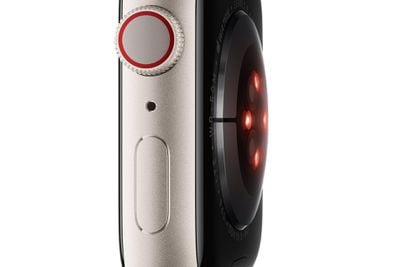
The wrist temperature sensor is primarily designed for women's health. It is able to take temperature readings every five seconds when the wearer is asleep, aggregating the data in the Health app. Temperature fluctuations can provide data on overall health to detect illness, but it is also useful for fertility planning.
The Apple Watch Series 11 is able to deliver retrospective ovulation estimates, letting users know when they might have ovulated for better cycle tracking. Apple says temperature sensing also improves period predictions for those who menstruate.
Blood Oxygen Monitoring
The Apple Watch Series 11 includes a blood oxygen monitoring feature, but in the United Stats, data from the blood oxygen sensor can only be viewed on the iPhone due to an ongoing lawsuit Apple is fighting. In other countries, data is available right on the watch.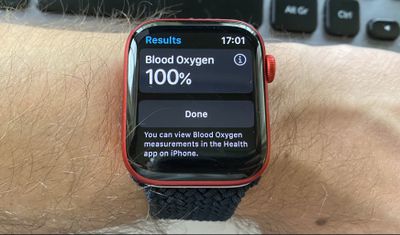
Blood oxygen saturation in a healthy individual is around 95 to 100 percent, and when the percentage of oxygen in the blood drops below that, it can be indicative of a serious health issue that needs immediate attention.
In the Series 11, green, red, and infrared LEDs shine light onto the blood vessels in the wrist, with photodiodes measuring the amount of light reflected back. Apple's algorithms then calculate the color of the blood, which is an indication of how much oxygen is present. The Series 11 can measure blood oxygen between 70 and 100 percent.
All Series 11 models can take blood oxygen readings during sleep, with data listed in the Health app.
Battery Life
Apple added a larger battery to the Series 11, and the Apple Watch Series 11 battery now lasts for up to 24 hours of "normal use." Apple says that after you've worn your watch all day, the increase in battery life allows you to wear it overnight without charging. The prior-generation Series 10 had an 18-hour battery life.
The Apple Watch Series 11 battery can last for up to 38 hours in Low Power Mode, and a 15-minute fast charge provides eight hours of battery life.
The 42mm Series 11 has a 1.245 watt-hour battery, while the 44mm Series 11 has a 1.403 watt-hour battery.
Apple bases "all-day" battery life estimates on 300 time checks, 90 notifications, 15 minutes of app use, a 60-minute workout with music playback via Bluetooth, and six hours of sleep tracking over a 24-hour period. For cellular models, Apple assumes four hours of a cellular connection and 20 hours of connection to an iPhone. In some situations, the Apple Watch drains faster, such as during calls or workouts.

The Apple Watch Series 11 can fast charge with Apple's Magnetic Fast Charger USB-C Cable and a 20W or higher power adapter. It takes approximately an hour for the Series 11 to charge from 0 to 100 percent.
The Series 11 can charge to 80 percent in 30 minutes, and a five-minute charge provides up to eight hours of sleep tracking.
Connectivity
Apple Watch Series 11 models are equipped with an Apple-designed W3 chip, and there are two variants available: GPS and GPS + Cellular. GPS + Cellular models have a built-in 5G chip and can connect to 5G or LTE without an iPhone, while GPS models are Wi-Fi only.

5G connectivity is new this year, and it is the first time the Apple Watch has supported faster 5G speeds. 5G is available in multiple countries, though in some areas, Apple Watch connectivity is limited to LTE.
With a cellular connection, the Apple Watch is untethered from the iPhone and does not require an iPhone or known Wi-Fi network for an internet connection. The Apple Watch is still not entirely independent from the iPhone, because cellular connectivity through a carrier requires an Apple Watch and an iPhone 6s or later to share a cellular plan with the same carrier.
Ultra Wideband Chip
The Apple Watch Series 11 has a second-generation Ultra Wideband (UWB) chip. The second-generation chip enables highly accurate short-range wireless that supports car keys, the feature that allows an Apple Watch (or iPhone) to be used in lieu of a physical car key.
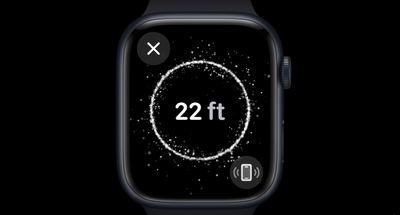
The UWB chip also allows the Apple Watch to track AirTags, and it allows an Apple Watch to use Precision Finding to track down a misplaced iPhone, even if it is in the same room. With the HomePod, when an Apple Watch gets within four meters of a HomePod that is playing audio, the Apple Watch Series 11 shows a Now Playing interface for media control. If nothing is playing on the HomePod, the Apple Watch shows media suggestions at the top of the Smart Stack.
Emergency SOS
Cellular connectivity enables an international Emergency SOS feature that was first released with the Series 5. With Emergency SOS, the Apple Watch can make international calls to emergency services regardless of where the device was originally purchased or if there's an active cellular plan.
If you're traveling to another country and are injured or in a situation where you need help, you can activate the SOS feature on the Apple Watch by holding down the side button to automatically get in touch with that country's emergency services. International emergency calling works with the Apple Watch's fall detection feature, so if that's enabled, it automatically places an emergency call if the watch senses the user has taken a hard fall and remains motionless afterward.
Wi-Fi, Bluetooth and GPS
Apple Watch Series 11 supports 2.4GHz and 5GHz 802.11n Wi-Fi, and Bluetooth 5.3, which offers longer range, faster speeds, larger broadcast message capacity, and better interoperability with other wireless technologies.
GPS has been included in the Apple Watch since the Series 2, and all Series 11 models feature a GPS chip that allows the Apple Watch to determine its position without needing to be near an iPhone.
With GPS, the Apple Watch is able to keep tabs on speed, distance, and route when you're walking, running, hiking, or biking, providing more insight into your fitness activities. GPS, GLONASS, Galileo, BeiDou, and QZSS systems are supported for positioning technology across multiple countries.
Nike and Hermès Models
The Nike Apple Watch was created in partnership with Nike and is designed specifically for runners. Nike Apple Watch models are all made from aluminum and are the same price as the standard aluminum Apple Watches.
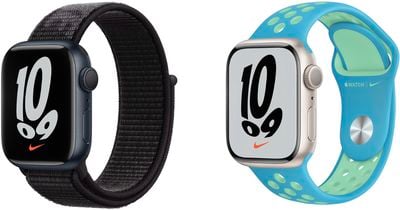
Nike Apple Watches come with Nike watch faces (though the watch faces are available on all iPhone models) and unique Nike-themed bands.
The Hermès Apple Watch collection was created in partnership with French fashion house Hermès and features some of the most expensive Apple Watches Apple offers because of the high price of the bands.
All Hermès models feature a titanium Apple Watch body paired with one of the Hermès signature hand-crafted bands and an additional orange Hermès-branded Apple Watch Sport Band. Hermès Apple Watches include unique watch faces based on Hermès watch designs.
Apple Watch Ultra and Apple Watch SE
The Apple Watch Series 11 is being sold alongside the more expensive Apple Watch Ultra 3, priced starting at $799, and the more affordable Apple Watch SE 3, priced starting at $249.
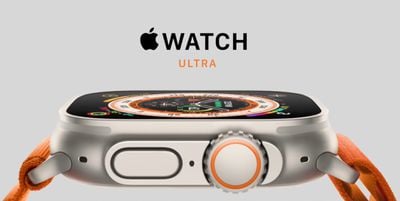
The Apple Watch SE uses an older design and it does not feature a blood oxygen sensor or ECG capabilities, while the high-end Apple Watch Ultra is aimed at adventurers and explorers with a larger 49mm case size, longer battery life, and a more rugged build.
What's Next for the Apple Watch
The 2026 Apple Watch models will not feature major design changes, and another design update won't happen until 2028 at the earliest.
A non-invasive blood glucose monitoring feature is still years away from launching despite 15 years of work, Bloomberg's Mark Gurman said in March 2025. There is no word on when it might be introduced.
A future version of the Apple Watch could include support for Touch ID, though it is unclear how this might be implemented. Touch ID could go under the display, or be integrated into the side button. Touch ID on the Apple Watch could reduce reliance on numerical passcodes for unlocking, though it is worth noting that the Apple Watch already has a wrist authentication feature for making purchases.
Apple Watch Series 11 Changelog
- November 17 - Added a rumor about the 2026 Apple Watch.
- October 7 - Added new buyer's guides.
- September 16 - Overhauled for Series 11.

